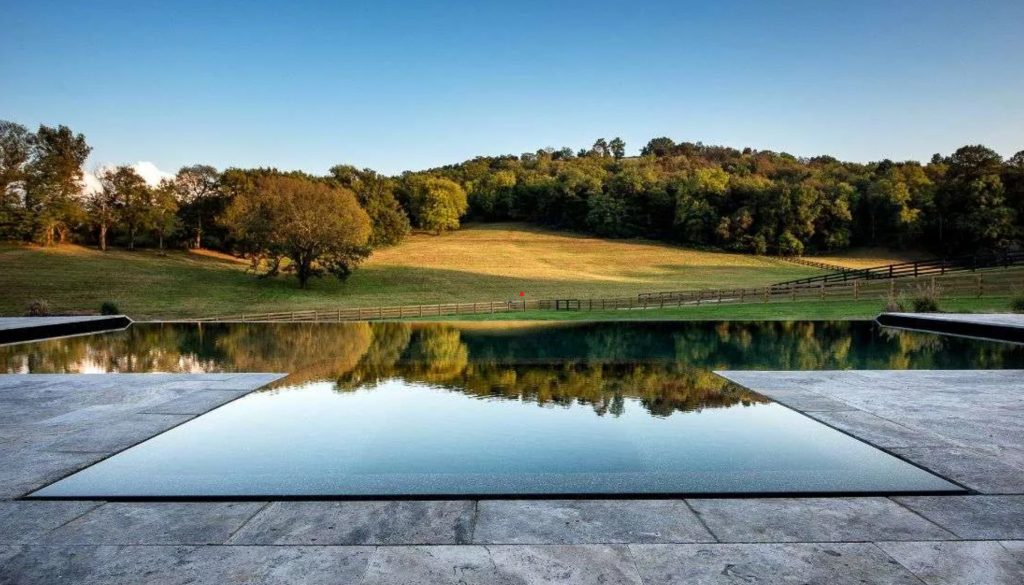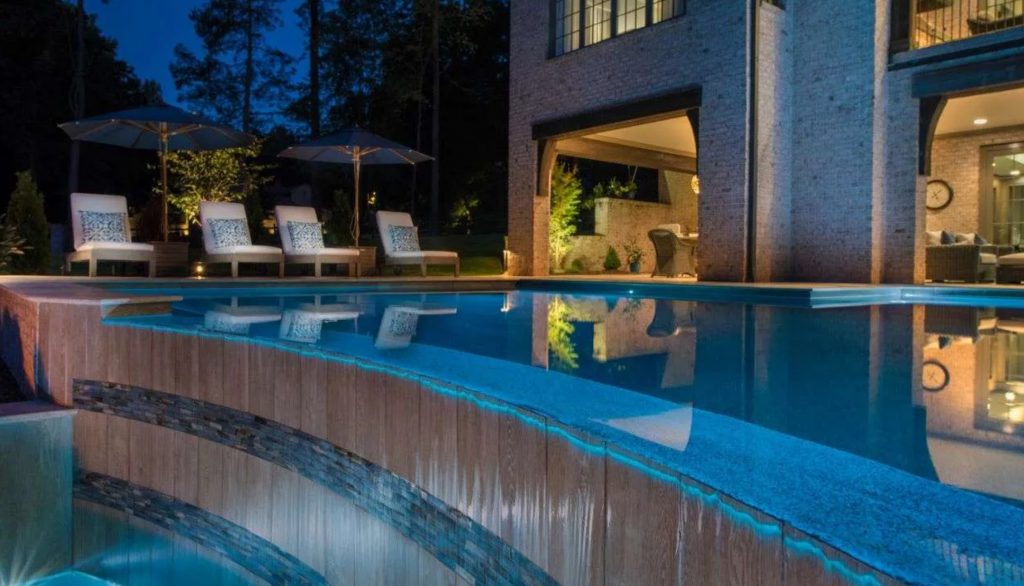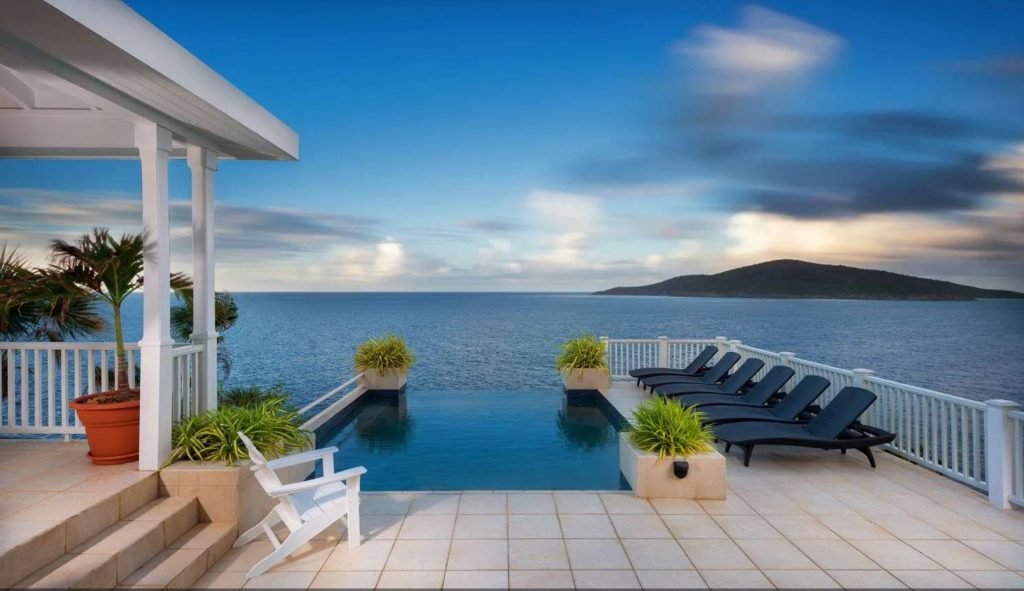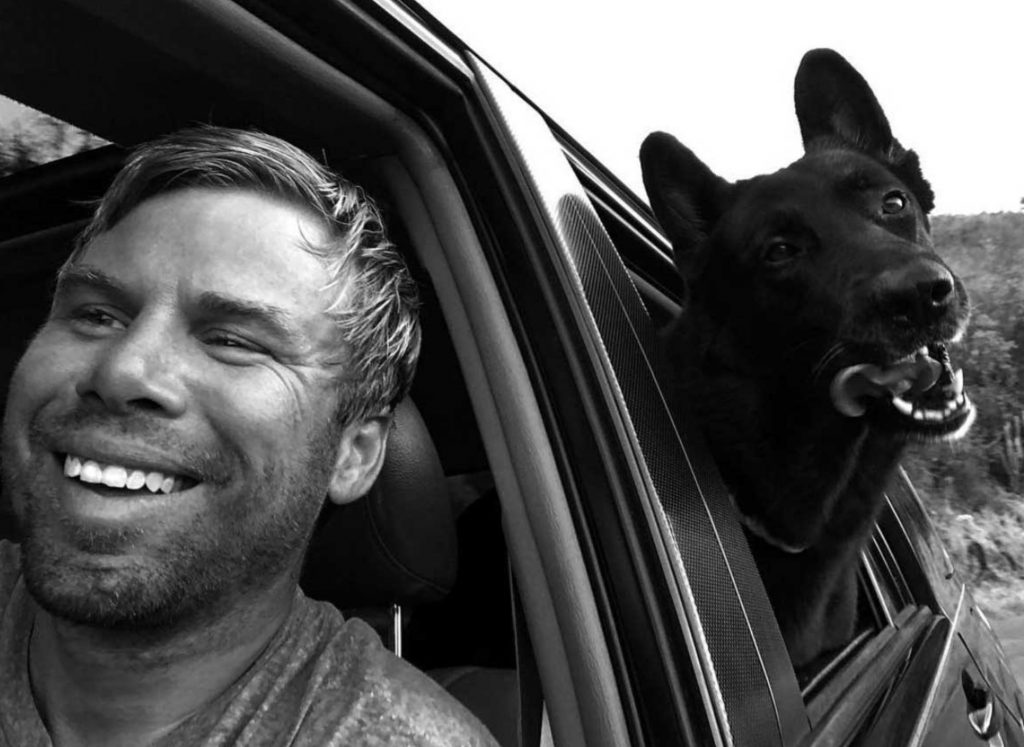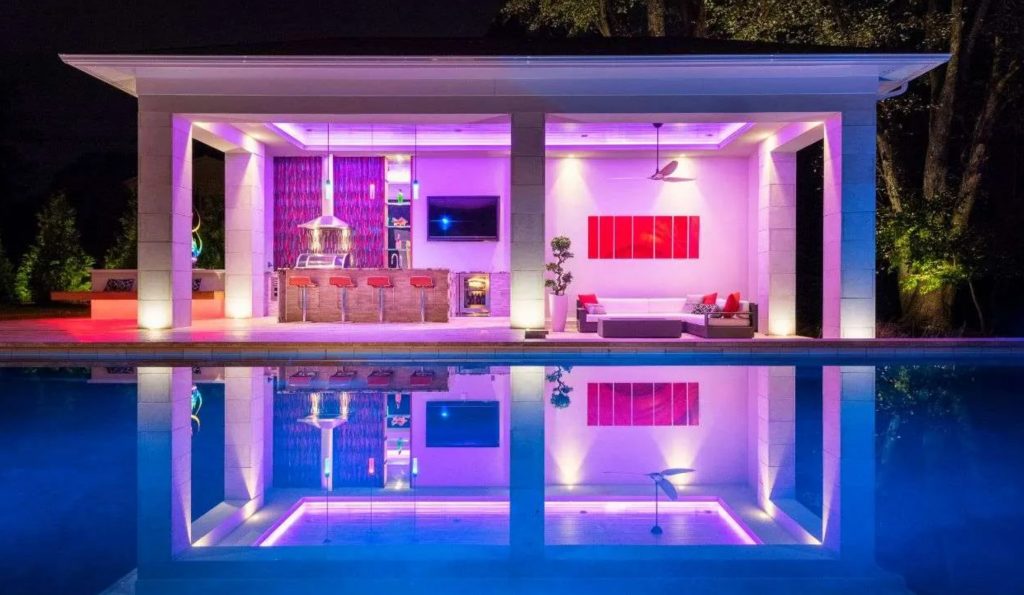Capturing the Vision
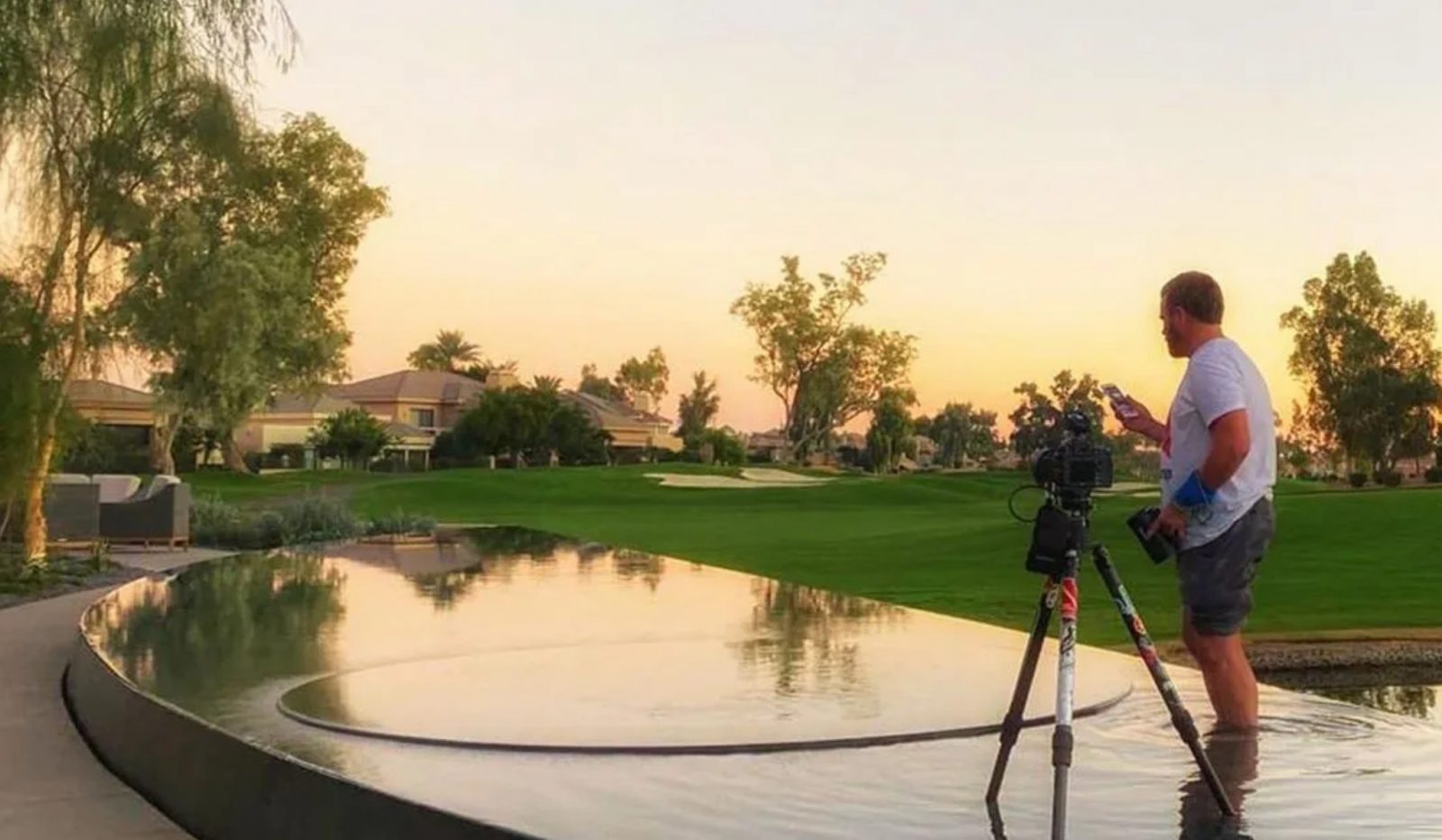
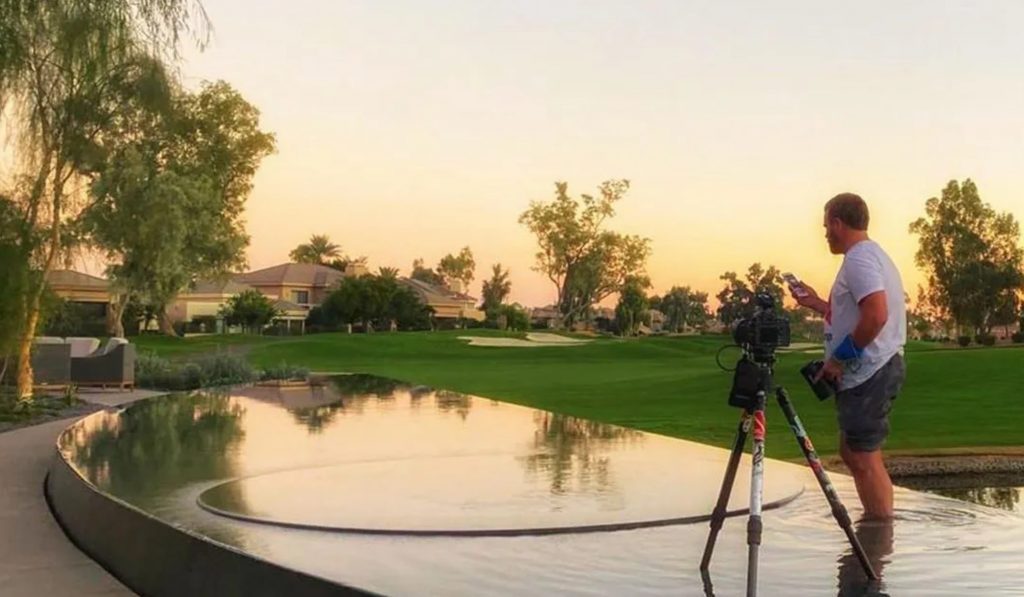
Photographer Jimi Smith has taken stunning photos of more than two thousand residential swimming pools, along the way building a strong reputation as the industry’s go-to photographer. He’s made high art of his images, capturing the beauty of pools using his gifted eye and modern photographic technology.
By Jimi Smith
Everyone who builds pools is ultimately selling something big – a product that requires significant investment and emotional buy-in from the client. The toughest part of that process can be developing the content needed to support the marketing and advertising messaging.
That’s where our company comes into the picture. As photographers, we’re in the business of providing visual content builders need to attract potential buyers, and ultimately convince them to invest in pool ownership. In very real effect, we are creating a record of watershapers’ finest works.
Pools are by their nature highly visual, and visible. When you look at promotional material from luxury resorts, for example, the lead image is almost always the pool environment. It’s the hook that snags the consumer’s full attention, which is why quality commercial photography is so important.
The same principle applies with residential pool photography. With the right imagery, you tell a story, one that’s defined by pleasure, health, beauty and experience. This is why we’ve been so successful; builders need quality images to tell that story, to populate their websites, outfit their portfolios, and stoke the dreams of would-be pool owners.
FRONT AND CENTER
Visual content has the power to separate you from the competition and, at the same time, inspire clients. Any editor or publisher will say that to properly tell a story, you need original photography. Oftentimes, procuring quality images is the hardest part of the process.
These days, it’s commonplace for builders to go the easy route by taking photos with their cell phones, or turning to amateurs who have no training and little understanding of photographic principles and techniques. While there’s nothing wrong with taking lots of photos on your phone, when it comes to finish images you’ll use in perpetuity, there’s a quantum difference in quality when you use a true professional.
From a business standpoint, our company has it pretty easy because our work is, in effect, also our advertising. It can be hard to describe why exactly our images are superior to impromptu picture taking, but it’s immediately obvious when comparing the pictures that we create versus most others.
I’ve studied photography — as well as art, design and engineering — have years of experience, and the difference is easy to see, whether you understand photography or not. We don’t have to advertise or market our work in the traditional sense. The more our images circulate, the more people come calling.
The business has been so successful that I’ve hired and trained a team of photographers to keep up with the demand. It’s become a family of artists who meet the needs of the watershaping industry’s top practitioners.
It’s a fun way to make a living. We travel far and wide to all these beautiful properties where we capture the works of highly creative professionals who are in the business of making their clients’ dreams come true. The work we do has tremendous long-term value for our builder clients, and oftentimes their clients, who love seeing their properties in such a beautiful light.
All of that is possible only if you know how to make beautiful pictures.
IN THE FRAME
I studied at the University of Georgia where I earned a degree in fine arts and photography. I also have degrees in engineering and music, and have always been interested in a wide range of topics. While I was studying fine arts at U of G, I also took courses at a local trade school about commercial photography, which had more of an emphasis on the business side of taking pictures.
While the university training focused on aesthetics and photo composition, the trade education offered an aperture into using photogrpahy skills to make a living. I saw photography as a good fit because it combines artistic and technical disciplines. It essentially uses both sides of your brain.
I started out using a 35mm Minolta and developing the images in a dark room. There was no Photoshop or digital editing and enhancement at that time; you had to get the shot in the frame. These days, people buy a point-and-shoot camera, watch the tutorial online, and then represent themselves as photographers. It makes me think of studying mathematics and how we learned to calculate long-hand on a piece of paper before we were allowed to use a calculator.
Knowing how photography works is the same way. Understanding the fundamentals of film photography enables you to make the best use of current digital technology.
I have learned that the equipment used does not make the difference between average and great imagery. When you have a great meal at a restaurant, no one thinks, wow, I bet they have a fantastic oven. The same thing is true with taking pictures. The quality of the image, the framing, composition, spatial relationships, use of light, all of those elements are based on the photographer’s eye, and experience.
Yes, we have state-of-the-art equipment, which we use to great effect to set us up for success; but, it’s the way you use that equipment to capture the scene that makes the difference. That’s especially true with a subject like pools, and landscape photography in general. The settings are beautiful to begin with, the art comes in how you frame the shot, how well you choose what the viewer will see, and not see.
A Nod to Tilt
As I travel the U.S. photographing pool after pool, my dog, Tilt, has been with me most every step of the way. He’s become a fixture in our business and a constant companion. Some people think his name is a photographic reference, but his real story is much different.
Tilt was part of a canine unit breeding program on St. Thomas in the U.S. Virgin Islands. The breeders were crossing German Shepherds with wolves to create highly intelligent and physically superior dogs for law enforcement.
Unfortunately, Tilt was born imperfect, with a weak neck muscle on his left side, and was going to be put down. I was able to intervene and give him a home. At first, he couldn’t hold his head up, but we were able to rehabilitate him so that he functions normally, and is now a licensed and fully trained service animal.
He still leans, tilts, to one side, hence the name. It’s funny, some vets immediately think he has an ear infection, but always soon discover he was just born tilting to one side.
Tilt was bred for intelligence and he is highly trained. He learns very quickly. In fact, I’m convinced that like other dogs who have been taught their whole lives, he has learned how to learn. He knows when to pay attention.
In that sense, we’re on this journey together. Like a lot of people, I’m very attached to my dog and wouldn’t want to do what I do without him.
There’s an intuitive aspect to composing shots that’s a response to the site itself — how you move the frame up or down, left or right. The subject matter is one thing, in our case, swimming pools, but the aesthetics of the image itself are another
There are endless examples of composition in fine art. One of the most straightforward is the Dutch painter, Piet Mondrian, who created what some people consider simplistic paintings comprised mostly of colored panels. His use of proportion, positive and negative space, color, line and dimension are both ingenious and instructive, even if his work is simplistic. He offers a great example of how breaking up space within a frame defines the viewer experience, even if the subject itself is simply colors and shapes.
In our work, we use those same principles, working to capture the space in way that is most appealing. Most viewers don’t consider “the recipe,” they just know it “tastes good.” The technology and artistic principles we use exist to communicate an experience; to tell a story about being there.
A COMPELLNG SUBJECT
Pools are inherently interesting subjects. Beginning with water itself, we all know that most people are hardwired to enjoy the presence of water. Pools are a dramatic example of how far many people will go to incorporate a body of water in their daily lives. So, there’s an emotional aspect to the subject itself.
Then there are the unique optical qualities of water. Using reflection and the shimmering effect of still water can be a powerful tool in the way it ties the pool to the surrounding landscape, architecture and the sky. The way water transforms the appearance of tile or pebble interior surfaces is another fascinating component and one that we’ve used to great effect.
Of course, the shape and presentation of the water in the space is a key element in the way the basic physical relationships present and even dictate key viewing angles and focal points. Whether it’s an intimate view of a bubbling spa, or the expansive vista of a vanishing edge, we work to both capture the entire scene, as well as more intimate views that draw attention to fine details, such as edge treatments, tile mosaics, fire, and moving water.
While it’s true that every pool, every scene, is different, it’s equally important to realize that every picture has been taken. There are tropes and aesthetics that appear over and over again, which is true of every form of art. It’s how you interpret those familiar elements in the context of the setting that gives the work a sense of originality.
When I teach our method to new photographers, we talk about things like symmetry, asymmetry, the rule of thirds, using depth of field and all the elements of composition. But we also consider the ways that you can break those rules, which is always based on the place itself.
While much of what we do is hard to explain, its also easy to understand when you look at the images themselves. You don’t need to know anything about photography to recognize a beautiful picture. That’s the power of visual content; it communicates instantly, and ultimately makes you want to see more.
That’s the vision we strive to capture.
Jimi Smith is a Virgin Islands-based photographer specializing in Architecture, Interiors, Commercial Spaces, Landscapes and Luxury Pools. A native of Athens GA, Jimi studied early on with degrees in Engineering, Physics, Fine Art Photography, and Music.










